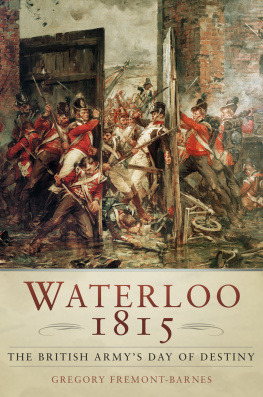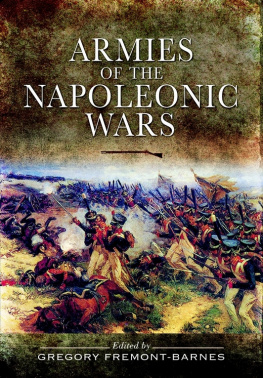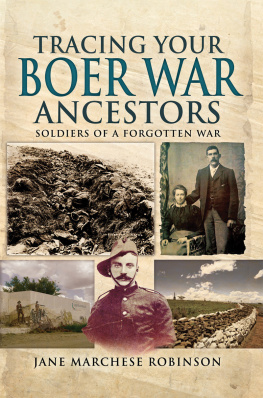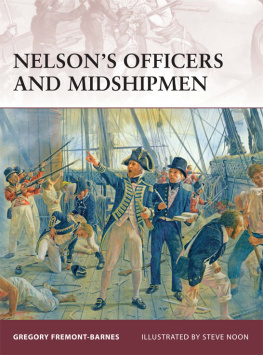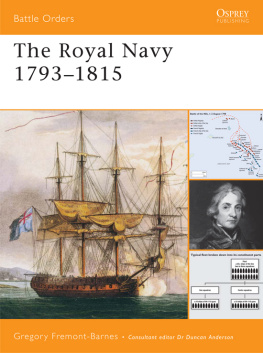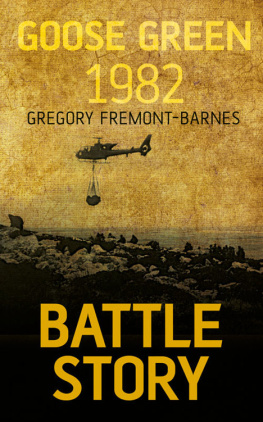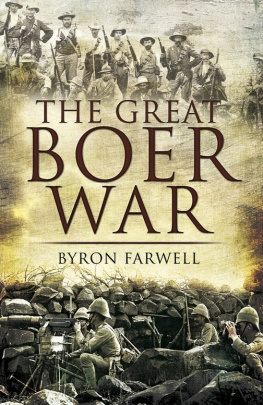Gregory Fremont-Barnes - Osprey Guide to The Boer War 1899–1902
Here you can read online Gregory Fremont-Barnes - Osprey Guide to The Boer War 1899–1902 full text of the book (entire story) in english for free. Download pdf and epub, get meaning, cover and reviews about this ebook. year: 2003, publisher: Osprey Publishing, genre: Politics. Description of the work, (preface) as well as reviews are available. Best literature library LitArk.com created for fans of good reading and offers a wide selection of genres:
Romance novel
Science fiction
Adventure
Detective
Science
History
Home and family
Prose
Art
Politics
Computer
Non-fiction
Religion
Business
Children
Humor
Choose a favorite category and find really read worthwhile books. Enjoy immersion in the world of imagination, feel the emotions of the characters or learn something new for yourself, make an fascinating discovery.
- Book:Osprey Guide to The Boer War 1899–1902
- Author:
- Publisher:Osprey Publishing
- Genre:
- Year:2003
- Rating:4 / 5
- Favourites:Add to favourites
- Your mark:
- 80
- 1
- 2
- 3
- 4
- 5
Osprey Guide to The Boer War 1899–1902: summary, description and annotation
We offer to read an annotation, description, summary or preface (depends on what the author of the book "Osprey Guide to The Boer War 1899–1902" wrote himself). If you haven't found the necessary information about the book — write in the comments, we will try to find it.
Osprey Guide to The Boer War 1899–1902 — read online for free the complete book (whole text) full work
Below is the text of the book, divided by pages. System saving the place of the last page read, allows you to conveniently read the book "Osprey Guide to The Boer War 1899–1902" online for free, without having to search again every time where you left off. Put a bookmark, and you can go to the page where you finished reading at any time.
Font size:
Interval:
Bookmark:
Guide To
The Boer War 1899-1902
Gregory Fremont-Barnes

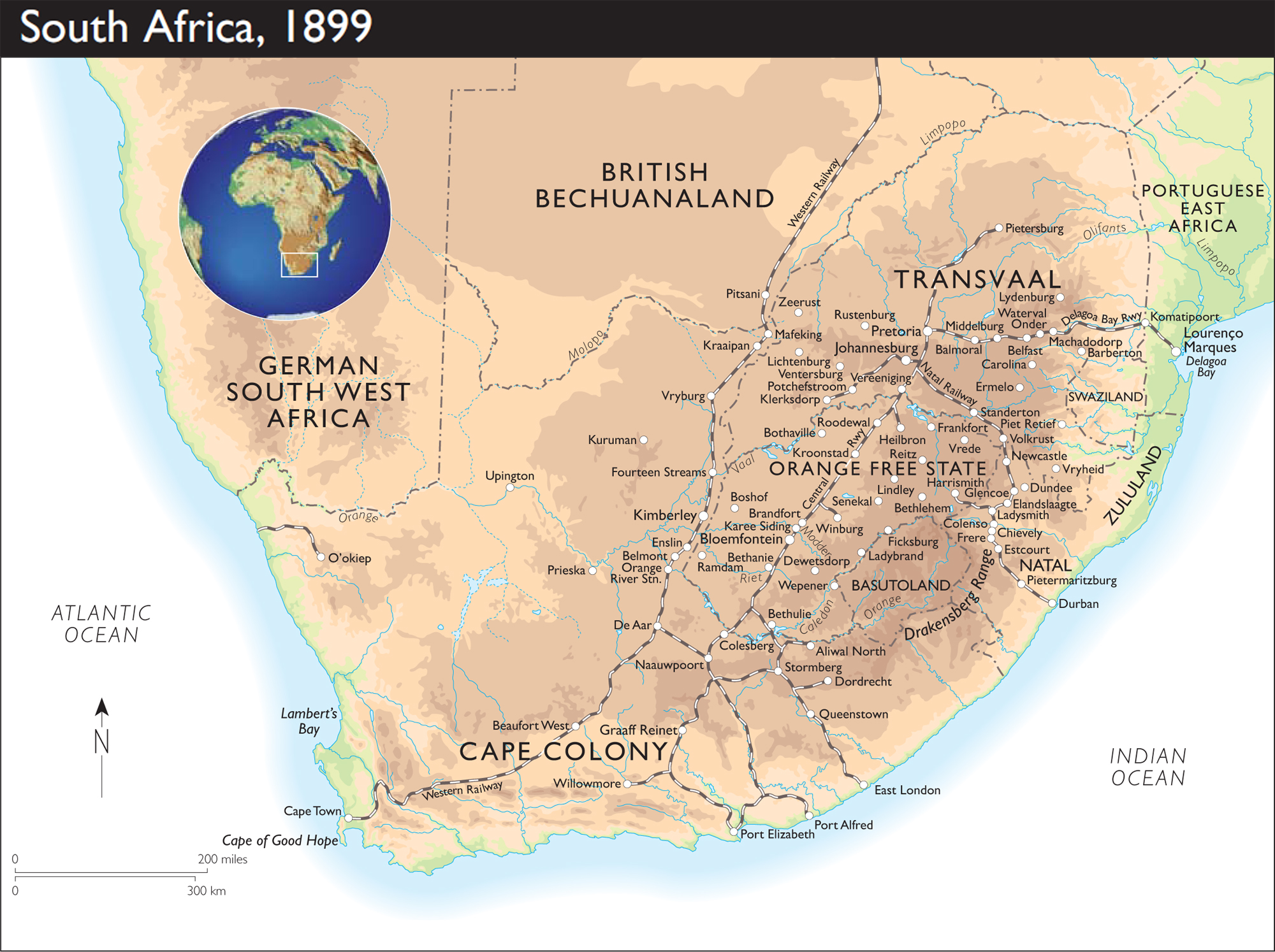
The total area of the four belligerent states was vast: 475,000 square miles, mostly consisting of high tableland, known as the High Veld, rising to about 4,500 feet above sea level. The wide, sometimes undulating, open spaces of the veld mostly scrub, bush and boulders provided ideal conditions for the highly mobile Boer forces. The small rocky hills, known as kopjes, provided them with useful points of observation and excellent defensive positions, especially when entrenched. October to March (spring and summer in the southern hemisphere) would be hot or very hot during the day and cold at night, with clear air offering long-range visibility. Dirt roads quickly turned to quagmires of mud in the frequent, sudden torrents of summer rain. In dry weather convoys and troop movements threw up clouds of dust in their wake.
Addressing the House of Commons in May 1896, the British Colonial Secretary, Joseph Chamberlain, made a remarkable prediction about the nature of a future war with the Boers. He declared,
A war in South Africa would be one of the most serious wars that could possibly be waged. It would be in the nature of a civil war. It would be a long war, a bitter war, and a costly war ... It would leave behind it the embers of a strife which I believe generations would hardly be long enough to extinguish ...
Chamberlains prediction was greeted with general skepticism, yet he was ultimately proven right. When hostilities began in October 1899, easy victory appeared a foregone conclusion to the many British observers who blithely announced that the war would be over by Christmas. After all, the Boers appeared to possess nothing more formidable than a small amateur army composed of simple farmers, while Britain could deploy a highly trained professional force which had an unbroken record of success in its other imperial campaigns. The Boers, many of whom were themselves equally confident of victory, soon shattered such illusions. Indeed, the war gave the British Empire, in the words of Rudyard Kipling, no end of a lesson, and Britain eventually required no fewer than 450,000 men to subdue an enemy that was never stronger than 60,000 men at any one time. The struggle continued for nearly three years, from 1899 to 1902, producing heavy casualties on both sides and bringing suffering and misery to hundreds of thousands of Boer civilians, many of whom were to die in British custody.
The Boer War, generally referred to by contemporaries in Britain as the South African War, was unlike any other conflict of the Victorian era. Nearly all such campaigns had been waged against native armies whose bravery and motivation was no match for a well-equipped professional force. Britain had always been able to rely on its tactical sophistication and the quality of its training and weapons to counterbalance the numerical superiority of these indigenous tribesmen, however resolute and highly disciplined. The only other major conflict fought by Britain in this era had been the Crimean War (185456), a war fought against European troops, with both sides employing tactics, weapons and even uniforms largely unchanged since Waterloo, 40 years before. Indeed, the traditional scarlet coat of the British infantryman still remained the hallmark of the army three decades after the Crimea.
The Boer War was an entirely different affair. The Boers were armed with modern, smoke-free, repeating rifles, accurate at great distances. The individual marksman was seldom to be seen as he issued fire from cover. The days of lines of men with bayonets lowered for the charge, great massed columns, soldiers deployed shoulder to shoulder, and glaringly inaccurate smoothbore muskets, were at an end. The Boers were largely an unseen force, and confronting them with traditional volley fire or hand-to-hand fighting proved difficult, if not impossible.
In the Crimea, a gallant officer who waved his sword in the air while leading his men forward, bayonets at the ready, stood some chance of surviving the charge. To attempt such folly on a South African battlefield was to mark oneself out for certain death in a hail of rifle fire. British officers eventually adapted themselves to the new realities of war, replacing their swords with revolvers and stripping their uniforms of the insignia that betrayed their rank.
Yet their troubles did not end there. Even if the Boers were driven off, suffering only minor losses, they simply remounted and rode away, ready to fight another day. Through superior mobility they consistently denied their opponents the opportunity even to face them in battle, much less to deliver a decisive blow. It was one thing to recognize that tactical changes would have to be made, it was quite another to implement these changes. The British Army, having experienced decades of success in other campaigns, was a deeply conservative institution. Many in senior positions bluntly refused to accept that numerous reforms would be required were its professional forces to outfight these amateurs.
The Boer War straddled two centuries not only in its chronology, but in the very manner in which it was fought. At first the fighting bore many of the hallmarks of 19th century warfare. The conflict as a whole was later characterized by the celebrated military historian, J. F. C. Fuller, as The Last of the Gentlemens Wars. Both sides exercised a certain degree of chivalrous conduct, not least to the wounded. The fact that deaths from disease still exceeded those suffered in action also placed the war in a clear 19th century context.
Yet the Boer War also witnessed the introduction of elements of warfare that we would associate more with the 20th than the 19th century. Specifically, new forms of technology were employed, such as the field telephone, searchlights, barbed wire and the heliograph, a mirrored device using flashes of sunlight to send signals in Morse code over considerable distances. Tactics changed significantly in order to cope with entrenched adversaries armed with rifles and machine-guns. For example, infantry advances in open order under the protection of a creeping artillery barrage were introduced. The war highlighted the efficacy of guerrilla warfare. This in turn led to a number of ruthless responses, including the policy of scorched earth, whereby British patrols roamed the countryside, setting fire and laying waste to vast stretches of the veld. Most shocking of all, British military and civil authorities rounded up and interned tens of thousands of civilians in concentration camps. When the war ended, there were more civilian than military dead, an indication of the way in which the conflict shifted over time from conventional to guerrilla fighting.
To some, as Chamberlain intimated, it was virtually a civil war, pitting as it did at times Boer against Boer and, more generally, whites against whites, in marked contrast to Britains many other colonial conflicts. Indeed, many British memoirs refer to Brother Boer. Yet recent research reveals what black Africans already knew. It was not strictly a white mans war, as it was popularly characterized at the time. From the start blacks were swept up into the conflict as laborers, scouts and spies for both sides, sometimes as combatants for the British, but mostly as innocent victims of a war fought by a race alien to their continent.
The unanticipated length of the conflict further distinguished the Boer War from other British colonial conflicts. It was also the first to inspire the interest of thousands of people back home. The general public, now enjoying a higher standard of literacy than ever before, benefited from novel rapid forms of communication that brought news even from a front thousands of miles away. For the first time, large numbers of people in Britain could and did follow the fortunes of their own soldiers at the front through newspapers, letters and postcards.
Next pageFont size:
Interval:
Bookmark:
Similar books «Osprey Guide to The Boer War 1899–1902»
Look at similar books to Osprey Guide to The Boer War 1899–1902. We have selected literature similar in name and meaning in the hope of providing readers with more options to find new, interesting, not yet read works.
Discussion, reviews of the book Osprey Guide to The Boer War 1899–1902 and just readers' own opinions. Leave your comments, write what you think about the work, its meaning or the main characters. Specify what exactly you liked and what you didn't like, and why you think so.

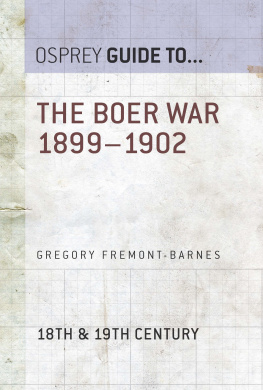
![Gregory Fremont-Barnes - A History of Counterinsurgency [2 volumes]](/uploads/posts/book/74652/thumbs/gregory-fremont-barnes-a-history-of.jpg)
